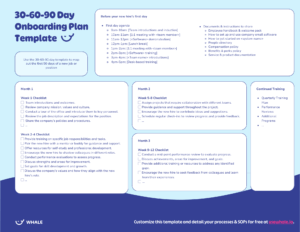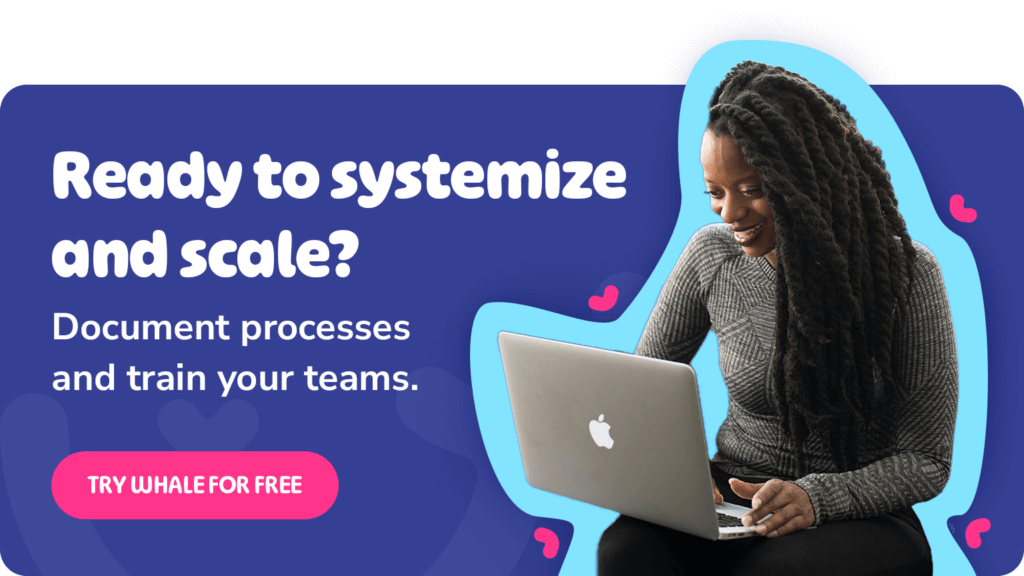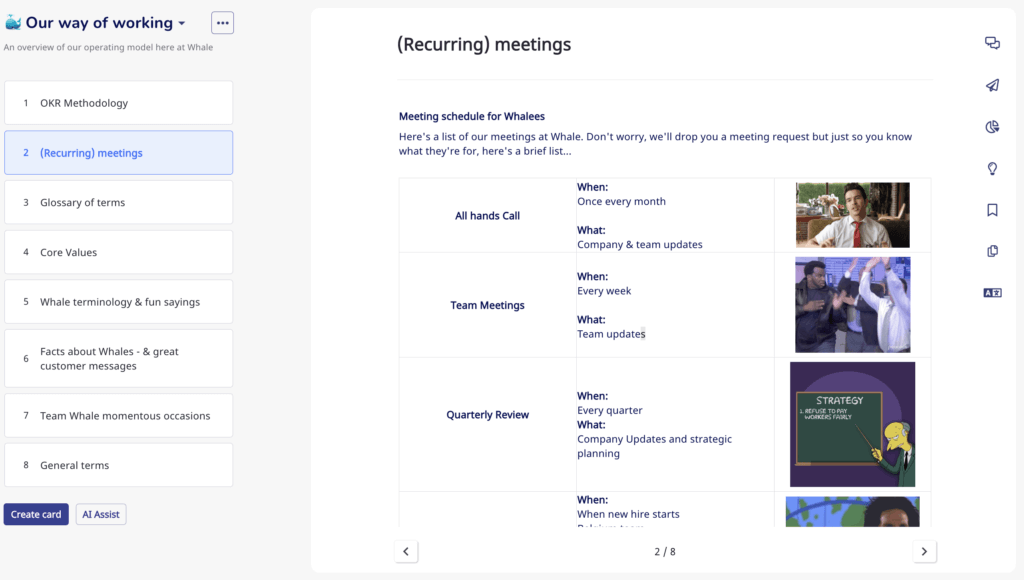Employee onboarding doesn’t start on the first day your team member arrives. It starts with a process and a mindset long before the new employee begins. If you’re going to set your new team members up for success, you need to master the 5C’s of Employee Onboarding.
Gartner states that only 12% of employees strongly agree their organization does a great job of onboarding new employees.
Given that onboarding is a powerful factor influencing retention, you’re going to want to make sure you’re giving your employee onboarding process, the attention it deserves.
Employee onboarding statistics that matter
There are 4 ways great employee onboarding impacts business growth.
Employee onboarding is often seen as a ‘soft’ subject that’s left up to HR and not given much importance but here’s why it matters;
- Higher employee engagement: A Gallup report found employees who had a great onboarding experience are 2.6 times more likely to be “extremely satisfied” at work.
- Talent retention: A Click Boarding study found employees are 58% more likely to stay with a company for three years if they have a structured onboarding program. In contrast, a great employee onboarding can improve retention by 82% (Brandon Hall Group).
- Cost saving: Considering that disengaged employees in the US cost their employers $450 to $500 billion each year, it’s no wonder onboarding programs are so important.
- Shorter time-to-productivity: Effective onboarding can shave months off a new hire’s time-to-productivity, according to a SHRM Foundation guide.
In other words, a company’s job in the first 90 days of onboarding a new employee is to increase the team member’s engagement and get them up to speed and confident to perform their role.
What are the 5C's of employee onboarding?
Typically the following 5C’s of employee onboarding are given in a slightly different order. Given that at Whale, we believe that culture is king, we’ve started there.
For the record, organizations that focus on the 5 C’s go on to achieve more successful onboarding and business outcomes than those that do not, hence why we’ve gone into depth on each one although they are interlinked too.
Culture ✨
Culture | /ˈkʌltʃə/
Culture is the very essence of who you are as a company and it’s what makes you tick. Culture consists of your values, the story of where you came from, and your personality as a company.
You wouldn’t marry someone who didn’t share the same core values as you do. So why would you work for a team or hire a new team member with different values?
Employee onboarding isn’t just about paperwork and policies; it’s a critical process that sets the tone for an employee’s entire journey within an organization.
The first rule of culture is show, don’t tell.
As culture is built on people and behaviour, here are some ideas for ways to onboard from a cultural perspective.
- An employee handbook. Yup, this applies to ALL of the 5C’s but it’s of specific importance here as it shows what type of culture the new team member is getting themselves into.
- SWAG. Yes, it may seem silly but SWAG is still a thing. It means a lot to a new person and gives the signal that they’re part of the team.
- Stories from the team (we go so far as to have an employee podcast) on who they are as humans, both in and out of the office, will go a long way to showing the culture of the workplace.
Culture killers
- A PowerPoint slide with your core values is NOT a great way to introduce new team members to your culture
- A 5-page document with your values is also NOT going to win you any culture points
Clarity 👍
Clairty | /ˈkler.ə.t̬i/
No one likes uncertainty. Uncertainty breeds confusion and dissatisfaction, leading to decreased productivity and morale. Clear onboarding goals are the cornerstone of a successful onboarding process.
You probably have a clear vision of where you want your company to go in the next year to five years. Employees want the same. Give new team members a clear understanding of their roles, responsibilities, and expectations and help them understand how they fit into the vision of the company.
By providing a comprehensive overview of their job descriptions, company objectives, and performance metrics, you empower employees to align their efforts with organizational goals. Clarity also fosters a sense of purpose, enhancing engagement and commitment to the mission at hand.
Some ideas of how to build clarity into your onboarding process include;
- Defining company objectives which includes aligning new hires with the company’s mission, vision, and values to instill a sense of purpose and belonging.
- Clarifying roles and responsibilities which includes setting performance expectations and goals from the start to provide employees with a roadmap to success.
Clarity killers
- Assumptions are the mother of …. Expecting that your new hires have the same mission and idea of objectives as you and the company, without communicating them, is a mistake.
- Make sure to align on objectives and roles and responsibilities between the hiring manager and HR BEFORE a new hire starts. It’s important that everyone is on the same page from the get-go.
Connection 💜
Connection | /kəˈnɛkʃn/
Connection refers to how accepted and valued new hires feel. At the heart of it all, we all want to feel a sense of belonging.
When new employees feel connected to their colleagues to their work, they will feel able and empowered to contribute.
Typically called ‘psychological safety’, it’s this sense of connection and security that leads to positive output and productivity. When employees feel valued and connected, they are more likely to stay committed to the organization, leading to increased productivity and a positive work environment.
According to Deloitte, employees who feel like they belong at work can see a 56 percent improvement in job performance so this is no soft and fuzzy.
Some ideas of how to build connection into your onboarding process include;
- Assigning a work buddy. Pairing new employees with mentors or buddies facilitates a sense of belonging. Effective mentorship programs provide guidance and support, enhancing the onboarding experience significantly.
- A first-day team meet. At Whale, we always do a team breakfast to break the ice and foster connection.
Connection killers
These may seem obvious but the following are instant connection killers in the workplace for a new hire;
- Not introducing the new team member to the others
- Expecting new hires to integrate into work without sharing critical information is bound to leave employees feeling disconnected and displaced.

Compliance 📃
Compliance | /kəmˈplʌɪəns/
What regulations impact your industry? How does someone apply for leave? What are the rules around sick leave? How do bonuses work? What days are considered public holidays?
New employees need to understand the rules, regulations, and policies of your organization. Compliance also deals with discrimination in the workplace and other issues.
Properly educating employees about legal requirements, safety protocols, and internal policies not only ensures a smooth workflow but also mitigates potential misunderstandings and conflict. It also sets the tone for professionalism and adherence to organizational processes.
Ideas of how to build compliance into your onboarding process include;
- Regulatory Training: Compliance training is vital to prevent legal issues. Delivering mandatory training modules effectively ensures that new hires are aware of regulations and policies with respect to the specific industry. This is especially important in the legal and financial services industries.
- Data Security and Confidentiality: Educating new employees about data protection and confidentiality is essential. Implementing secure protocols for handling sensitive information safeguards both the organization and its employees.
Compliance killers
The only major compliance killer we want to mention here is not doing any compliance training whatsoever! Remember that if a new team member makes a mistake due to not knowing, it impacts the company and brand.
Checkback ✅
Feedback | /ˈfiːdbak/
A checkback simply refers to onboarding feedback. Remember that your new hires could be your next hiring manager and their feedback is crucial to improving the onboarding experience.
Use the following in your onboarding experience to ensure checkbacks result in improvement;
- Regular Check-ins and Feedback: check-ins to adjust your onboarding program on the go as you learn more about what is and isn’t working. Regular performance evaluations and feedback sessions create a culture of continuous improvement. Open communication channels foster trust and enable employees to voice their concerns and suggestions.
- Employee onboarding software will allow you to get documented feedback on onboarding processes that work particularly well, or don’t.
Checkback killers
The following will NOT be helpful in getting feedback from new team members on their onboarding experience;
- Asking the new team member’s workbuddy on the team members’ onboarding experience. You can’t ask someone to speak on behalf of someone else.
And confidence 🏂
Confidence | /ˈkɒnfɪd(ə)ns/
Nowadays the 5 C’s of employee onboarding are commonly referred to as the 6 C’s of employee onboarding.
Confidence refers to how much a new employee feels empowered to do the job they were hired to do and to tackle new challenges.
It can be difficult to measure but easy to see and feel. When a new employee feels empowered to perform, it’ll show in their work. And how do you increase confidence?
- Schedule new employee training
- Give new team hires the opportunity to prove their worth in tasks that will help build their confidence and which they love to do.
Confidence killers
Here are a few confidence killers that will NOT inspire confidence and if anything will lead to major unhappiness in new employees.
- Criticism. Criticism is VERY different to feedback. Feedback is an engaged learning process where criticism can feel like a personal attack for the person on the receiving end.
Inconsistent information can be devastating to a new team member who has no idea what to expect. Make sure to keep processes documented so that everyone is on the same page and knows what to do.
An Employee Onboarding Checklist - 22 points to remember
But how to put the 5C’s into action? Take this checklist to create a seamless onboarding experience;
- Document your onboarding process
- Get all necessary payroll forms and documents signed before the starting date
- Load all the new team member’s details onto the payroll and where necessary
- Send a welcome email or letter to the new hire with details of the onboarding process. Don’t forget to mention how excited you are to have them join the team!
- Set up the new remote team member’s email!
- SWAG! Yes, it still matters! Everyone (no matter what they might say) loves a hoodie, mug, or journal.
- Share an employee handbook
- Schedule a connect session with the hiring manager to share expectations and for a Q&A session
- Share meeting schedules and send invites accordingly.
- Assign a work buddy
- Get all the necessary equipment ready
- Give the new team member access to necessary tech and company tools ideally before the first day
- Ask the new team member if they have any questions about the onboarding process
- Schedule all meetings with calendar requests ahead of time
- Prepare a meet-the-team social post to make them feel super welcome!
- Make the first day special
- Schedule a meeting with the team in a group or through one-on-ones to introduce the new team member
- Use technology to train new employees
- Have a 30-60-90 day plan which is shared with the new team member. Ideally this should be done in a chat with the hiring manager.
- Schedule new employee training and ongoing training
- Discuss and schedule performance reviews
- Get onboarding feedback to determine how your new team member found the onboarding process
Bottom line and the 5C's of Employee onboarding
The 5C’s of Employee onboarding are important to know if you’re serious about creating a great onboarding program.
Onboarding starts before the new hire even signs the employment contract and you should have an onboarding plan to maximize the success of onboarding and training all new hires.
An onboarding plan doesn’t just help the new hire but also helps to facilitate a smooth transition for the hiring manager and other team members. The quicker team members integrate into a new working environment, the better for everyone and the faster everyone reaps the rewards.









